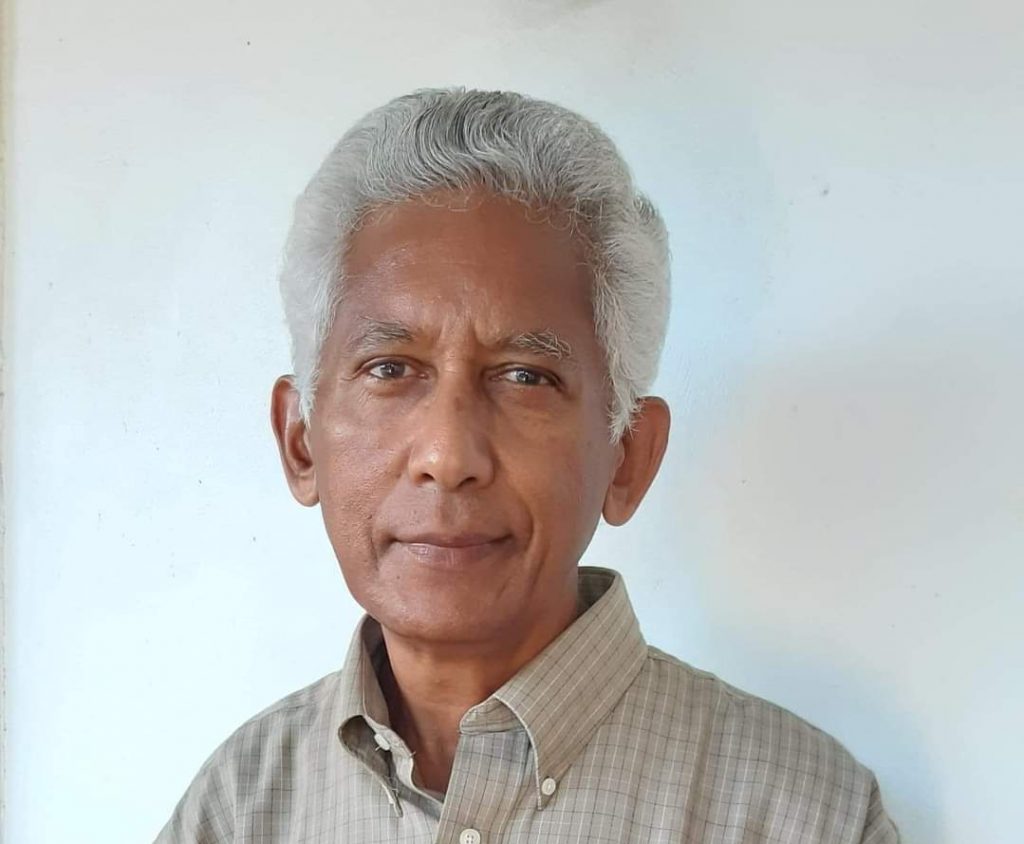Dear Editor,
VENEZUELA is brewing a storm in a tea cup while Guyana briefs the international community about the actions taken by Nicolas Maduro, President of Bolivarian Republic of Venezuela.
The brazen, bold and bullish behaviour of a barefaced braggart, behooves diplomacy’s last bastion of public bureaucracy.
Reports of increased Venezuelan military activities close to Guyana’s borders has raised eyebrows and is viewed as having “the potential to incite violence and to threaten the peace of Guyana and by extension the Caribbean Region.”
Essequibo, known as the “Cinderella County,” is home to some 290,000 people stretching across 700 villages and communities, making a living involved in mainly agriculture industries and mining for gold and other precious minerals.
The rich Rupununi Savannahs unfolds its virgin plains and fishes of various species, including the largest sweet water fish, the Arapaima. The prestigious rainforests are pristine for their carbon credits and lumber values. Guyana’s hinterland is the scenery of towering mountains unfolding her majesty to boast the likes of Mount Roraima.
Kaieteur Falls bedazzles visitors as the world’s largest single-drop waterfall. Domiciling in the interior are the indigenous people, Guyana’s first born original inhabitants of this land of many waters.
The response from the Venezuela’s representative as “curbing illegal mining,” with their equipment movement, is an affront for their military exercises at Eteringbang, Region Seven (Cuyuni-Mazaruni), and should be taken with a grain of salt and perceived as premeditated maneuvering with the ultimate intention to claim untitled land belonging to Guyana.
Guyana remains steadfast to the validity of the Arbitral Award of 1899. Venezuela pursues a claim of void and refuses to recognise that the ICJ has jurisdiction to hear this case.
Guyana’s massive oil finds and selling of the recent oil blocks found in sovereign territory, only inflamed an already infuriated Venezuela to instigate a communique protesting the sales which threaten Guyana as an independent nation.
Venezuela’s National Electoral Council has further undermined the security of Guyana, threatening peace and inciting violence with a planned National Consultative Referendum, slated for December 3, 2023. It purports to seek the permission of the people to simply “annexed” Essequibo by creation of a state comprising the Cinderella County.
In October 1966, the Venezuelan army seized the Eastern half of Ankoko Island situated at the confluence of the Cuyuni and Wenamu Rivers, which forms part of the boundary between Guyana and Venezuela. A couple of days prior to Guyana becoming a Republic State on February 23, 1970, Venezuelan soldiers on Ankoko opened fire with guns and mortars on the Guyanese military outpost at Eteringbang.
The firing continued intermittently throughout the next day, but there were no reports of injuries even though buildings were damaged. Despite these military aggressions, Guyana has remained calm and sought diplomatic channels to resolve her border issue.
Harry Innis Perkins and Charles Wilgress Anderson of Great Britain and Abraham Tirado and Elias Zoro of Venezuela made up the Mixed Venezuelan-British Boundary Commissioners. The Commission drew a line passing through the island and dividing it from north to south in roughly equal parts.
The eastern part of about three-square miles falling on the British Guiana (Guyana) side of the boundary and the western part falling on the Venezuelan side. A boundary map showing these details was signed on January 7, 1905 by the Boundary Commissioners. The 1905 map was reissued in 1911and 1917 and published under the authority of General Gomez, then President of Venezuela, and signed by F. Alicantara, the Venezuelan Minister of Internal Affairs.
Despite the border dispute, both nations have co-operated on trade, health and other sectors. For example, the Guyanese government had signed a rice compensation agreement with Venezuela in 2009 wherein Guyanese rice exports were accepted in partial payment for imports of Venezuelan oil. During the days of dictatorship under the Kabaka, many Guyanese sought refuge for greener pastures in foreign countries, including in the land of Venezuela. There was also brisk trading for foreign banned food stuff and other items.
Now we are attesting to the vice versa situation as Maduro bankrupts a once prosperous nation, leaving the food shelves empty in the supermarkets, disrupting the peaceful lives of people and impoverishing the nation as he rules by controlling the military forces. The US has frozen Venezuelan assets in the US and there is an oil embargo.
Millions of Venezuelans have been forced to flee their homeland. Refugees are arriving by the hundreds in Guyana, home to over 30,000 Venezuelans, seeking food, cloth and housing as they scramble for work in order to maintain their families, forced to live together under one roof, bundled by the dozens. Most Guyanese have left Venezuela and have already returned home since Maduro became President.
Venezuela wants to withdraw from the present judicial proceedings, despite the ICJ still processing the case. Guyana enjoys the full support of CARICOM, the Secretaries-General of the United Nations and the Organisation of the American States, the Commonwealth Nations and the entire international community. Venezuela, as it is, stands solitary and risks being accused of criminal aggression, should they invade or seize any land belonging to Guyana.
Guyana remains a peaceful nation but like Dave Martin said, Guyanese “ain’t giving up no mountains, no tree, no river that belongs to we, not one blue saki, not one rice grain, not one kuras, not a blade of grass.”
Yours respectfully,
Jai Lall.
